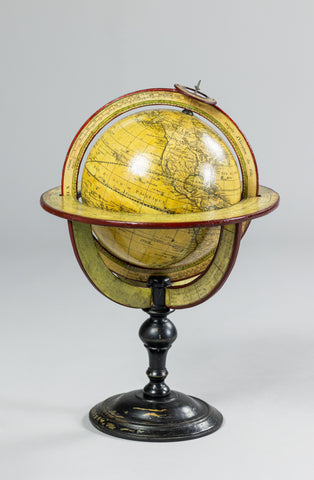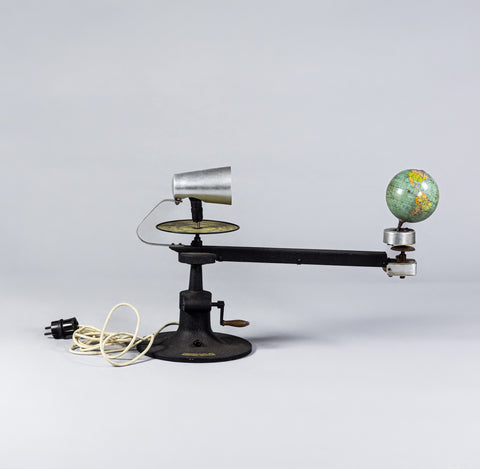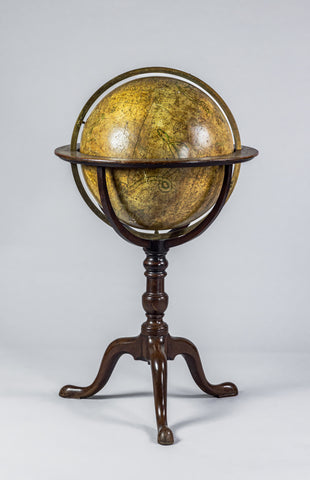
Thomas Malby and Son. Reissued by James Wyld the younger, Malby’s terrestrial compiled from the latest & most authentic studies
Thomas Malby and Son. Reissued by James Wyld the younger
Malby’s terrestrial compiled from the latest & most authentic studies
London, James Wyld the younger, 1885
Diameter 36 in.; Height 56 in.
A monumental terrestrial globe. The globe made up of two sets of 48 hand-colored engraved globe gores, with polar calottes, the surface with some stress cracks along gore edges and a few other cracks, large areas of the Northern Pacific and the central Atlantic touching Greenland and Brazil all expertly restored, with the title cartouche also redrawn in manuscript. Later brass hour circles diameter 6.5 inches, later brass meridian circle graduated on one face, facsimile horizon papers. The globe mounted in a late 19th century stand in Malby/Wyld style, the horizon supported by a contemporary tripod veneered wooden stand, central wooden support, scrolled supports and base, castors.
This monumental terrestrial globe, called the “Colossus Globe” was manufactured by James Wyld in 1867 and it was the largest and one of the rarest globes to be issued by any British globe maker. In a sense, it was the British version of the large 110 cm diameter globes issued by Coronelli in the late 17th century, which were constructed for the Royalty and Nobility of Europe. In the early 19th century, the economic successes of Britain on the world stage 35 required an equally large globe for the upper-class clientele of Britain. The origins of this globe go back to the first British 3-foot diameter globe made by Thomas Addison in 1825, after which the gores passed down to Malby & Co. around 1845, who reissued the globe in 1849. Famously, a monumental pair of these Malby globes, on glamorous stands, caused a big stir when they were put on show at the Great Exhibition in 1851. With the demise of the Malby firm in 1860, the gores passed on to James Wyld II, who published the terrestrial globe again in 1867. James Wyld was a man captivated by large globes, renting a plot of land in Leicester Square, London and as an entertainment, he built a 20-meter diameter globe structure, within which was a walk called Georama, that was in use from 1851 to 1863. The colossal nature of the Malby/Wyld 3 feet diameter globes became one of the pinnacle geographical objects produced in mid-19th century Britain.
We Also Recommend





